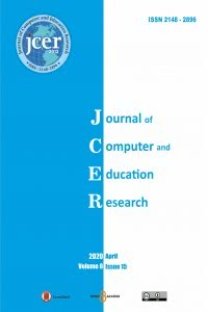Multiple Intelligence’s and Computational Thinking
Multiple intelligences, critical thinking, problem solving
Multiple Intelligence’s and Computational Thinking
Multiple intelligences, critical thinking, problem solving,
___
- Angeli, C. & Giannakos, M. (2020). Computational thinking education: Issues and challenges, Computers in Human Behavior, 105, 106185, pp3, doi.org/10.1016/j.chb.2019.106185
- Bakala, E., Gerosa, A., Hourcade, J., & Tejera, G. (2021). Preschool children, robots, and computational thinking: A systematic review. International Journal of Child-Computer Interaction, 29, 100337, https://doi.org/10.1016/j.ijcci.2021.100337.
- Bers, M. U. (2018). Coding and computational thinking in early childhood: The Impact of scratchJr in Europe. European Journal of STEM Education, 3(3), 08.
- Fajrina, S., Lufri, L. & Ahda, Y. (2020). Science, technology, engineering, and mathematics (stem) as a learning approach to improve 21st century skills: A review. International Journal of Online & Biomedical Engineering, 16(7), 95-104.
- Furber, S. (2012). Shut down or restart? The way forward for computing in UK schools. Technical report, London: The Royal Society.
- Gerosa, A., Koleszar, V., Tejera, G., & Gómez-Sena, L. (2021). Cognitive abilities and computational thinking at age 5: Evidence for associations to sequencing and symbolic number comparison. Computers and Education Open, 2, 100043.
- Grover, S., Pea, R., & Cooper, S. (2015). Designing for deeper learning in a blended computer science course for middle school students. Computer Science Education, 25(2), 199-237.
- Gardner, H. (1995) Inteligencias múltiples. la teoría en la práctica. Barcelona: ediciones Paidós.
- Özbey, S. & Köyceğiz, M. (2020). A study on the effect of the social skill education on the academic self respect and problem-solving skills of the pre-school children. International e-Journal of Educational Studies, 4(8), 176-189. https://doi/10.31458/iejes.727590
- Papadakis, S. (2020). Robots and robotics kits for early childhood and first school age. International Association of Online Engineering. https://www.learntechlib.org/p/218338/ Partnership for 21st Century Skills (2009). P21's framework for 21st century learning, retrieved 16/10/2019 from https://files.eric.ed.gov/fulltext/ED519462.pdf
- Pears, A., Barendsen, E., Dagienė, V., Dolgopolovas, V., & Jasutė, E. (2019). Holistic STEAM education through computational thinking: A perspective on training future teachers. In: Pozdniakov S., Dagienė V. (eds) Informatics in Schools. New Ideas in School Informatics. ISSEP 2019. Lecture Notes in Computer Science, vol 11913. Springer, Cham. https://doi.org/10.1007/978-3-030-33759-9_4
- Polya G. (1945). How to solve it. Princeton: Princeton University Press.
- Rogozhkina, I, & Kushnirenko, A. (2011). PiktoMir: teaching programming concepts to preschoolers with a new tutorial environment, WCETR 2011 in Procedia - Social and Behavioral Sciences 28 (2011), 601-605, https://doi.10.1016/j.sbspro.2011.11.114
- Sisman, B., Kucuk, S. & Yaman, Y. (2020) The effects of robotics training on children’s spatial ability and attitude toward STEM. Int Journal of Social Robotics, 13, 379-389. https://doi.org/10.1007/s12369-020-00646-9 Wakil, K., Khdir, S., Sabir, L. & Nawzad, L. (2019). Student ability for learning computer programming languages in primary schools. International e-Journal of Educational Studies, 3 (6), 109-115. https://doi/10.31458/iejes.591938
- Wing, J. (2017). Computational thinking’s influence on research and education for all, Italian Journal of Educational Technology, 25(2), 7-14. doi:10.17471/2499-4324/922
- Wing, J. (2006). Computational thinking, Communications of the ACM, 49(3), 33-35.
- Yadav, A., Mayfield, C., Zhou, N., Hambrusch, S., & Korb, J. T. (2014). Computational thinking in elementary and secondary teacher education. ACM Transactions on Computing Education (TOCE), 14(1), 1-16.
- Yayın Aralığı: 2
- Başlangıç: 2013
- Yayıncı: Tamer KUTLUCA
Multiple Intelligence’s and Computational Thinking
11. Sınıf Rehberlik Programının Öğrenci Görüşlerine Göre Değerlendirilmesi
Burak BİNGÖL, Mehtap SARAÇOĞLU
Sosyal Bilgiler Öğretmenlerinin Sosyal Duygusal Öğrenme Becerilerinin İncelenmesi
Evaluation of Science and Mathematics Textbooks in Context of Digital Competence
Meral ÇELİKOĞLU, Erol TAŞ, Hayrunnisa AYYILDIZ, Hacı Mehmet YEŞİLTAŞ
Perceptions of Secondary School Students towards the Concept of Refugee
Ortaöğretim Öğrencilerinin Okula Yönelik Tutumlarının ve Başarı Amaç Yönelimlerinin Belirlenmesi
The Importance of Technology in the Education of Gifted in the Context of 21st Century Skills
